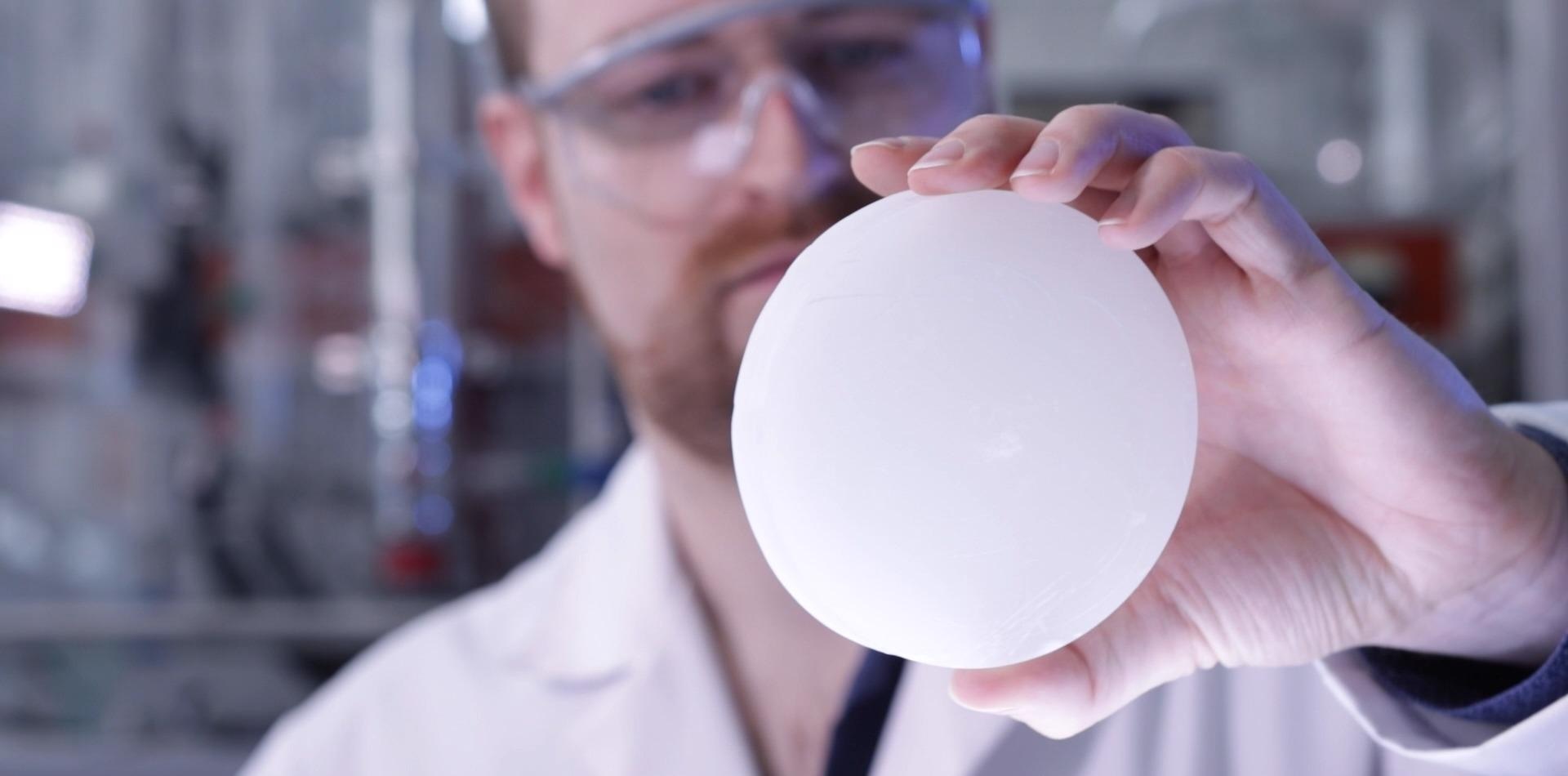At the Martin Luther University Halle-Wittenberg (MLU) and the University of Leipzig, researchers have developed a new heat storage material that could help considerably enhance the energy efficiency of buildings. Also, it can be utilized to store excess heat and release it back into the surroundings when needed.
 Felix Marske holds a sample of the new material. Image Credit: Uni Halle/Marian Sorge.
Felix Marske holds a sample of the new material. Image Credit: Uni Halle/Marian Sorge.
Dissimilar to materials available at present, the new one has the ability to absorb considerably more heat, which is highly stable, and is made of safe substances. The study was published in the Journal of Energy Storage.
The invention is an alleged shape-stabilized phase change material. It can absorb huge amounts of heat by altering its physical state from solid to liquid. Furthermore, the stored heat is re-released when the material toughens.
Many people are familiar with this principle from hand warmers.
Thomas Hahn, Professor, Institute of Chemistry, Martin Luther University Halle-Wittenberg
But the invention from Halle would not be utilized in coat pockets. Rather, it could find its use in the construction industry as huge panels that could be combined into walls. These would absorb heat during the sunny hours of the day and discharge it again later when the temperature descends.
This could be of great help to save a lot of energy. The scientists have estimated that when the new material heats up, it is possible to store - under the proper conditions - up to 24 times per 10 °C more heat compared to traditional wallboard or concrete.
Unlike hand warmers, the panels made with this material mixture do not melt when heat is being absorbed.
In our invention, the heat storage material is enclosed in a framework of solid silicate and cannot escape due to high capillary forces.
Thomas Hahn, Professor, Institute of Chemistry, Martin Luther University Halle-Wittenberg
Above all, the substances that are utilized in its production are eco-friendly: safe fatty acids like those found in creams and soaps. Also, the additives that contribute to the material with its strength and increased thermal conductivity could be obtained from rice husks.
In the current study, the research group explains the steps involved in making the structure of the material and how the different chemicals tend to impact each other. For this, the team received support from a group of scientists headed by Professor Kirsten Bacia from MLU, who utilized fluorescence microscopy to envision the mechanism.
The knowledge we are gaining can be used to further optimize the material and to potentially produce it on an industrial scale.
Felix Marske, Institute of Technical Chemistry, Martin Luther University of Halle-Wittenberg
Marske forced the development forward as part of his doctorate with Thomas Hahn.
So far, the material is still only being produced in small amounts in the laboratory. In the forthcoming days, it can be integrated with other steps to help to make buildings considerably highly energy efficient or to passively cool photovoltaic systems and batteries, thereby boosting their efficiency.
Journal Reference:
Marske, F., et al. (2022) Influence of surfactants and organic polymers on monolithic shape-stabilized phase change materials synthesized via sol-gel route. Journal of Energy Storage. doi.org/10.1016/j.est.2022.104127.